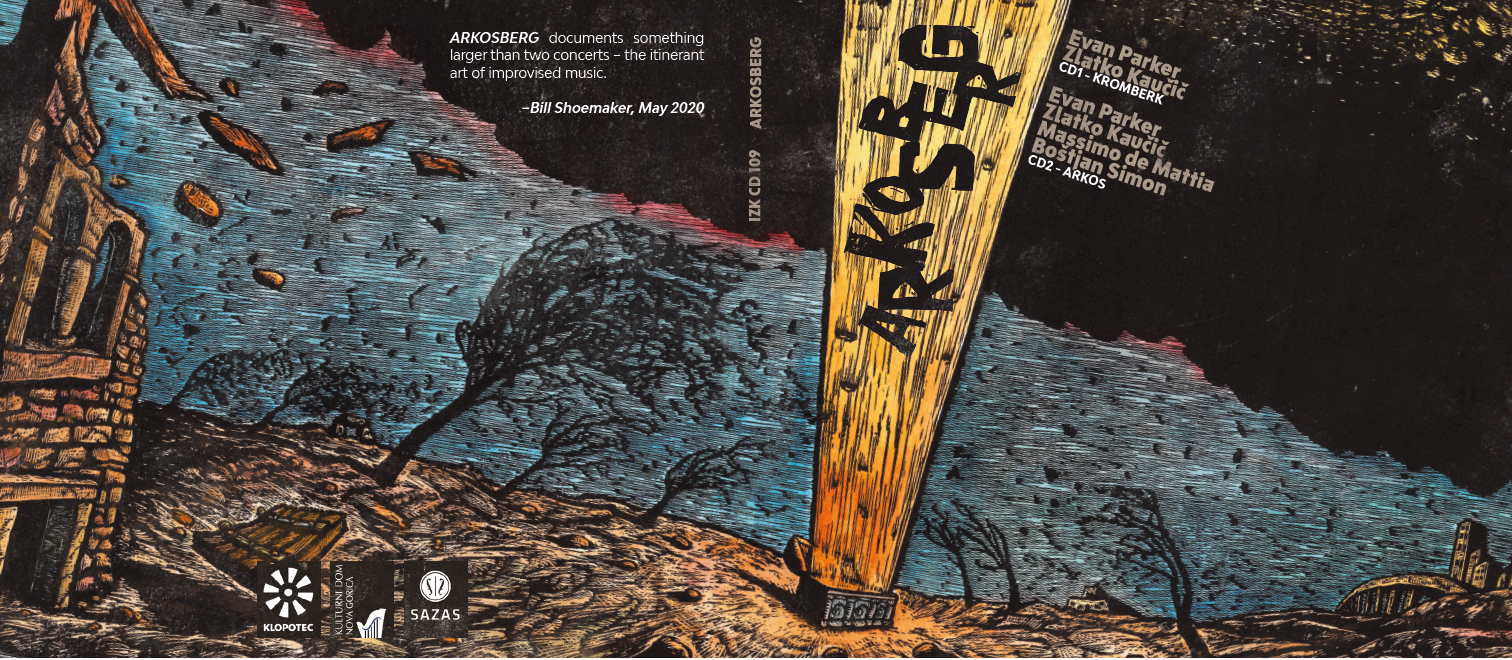Deploying process until 2028
Men at work: Saint-Esprit, Paris
Church of the Holy Spirit (Saint-Esprit) in Paris was mostly empty. Not only is praying in Paris allowed only through masks, but the church’s roof was also occupied by men at work, trying to bring the old sparkle to this shrine. A beautiful reinterpretation of Hagia Sophia in Istanbul has some of the most astounding frescoes made by the contemporary artists from Ateliers d’Art Sacré movement. Great acoustic, historical lack of tourists, declining numbers of practising believers and COVID strangeness - this recording captures it all.
…An Italian Square Appeared Right There in The Middle of London
I can no longer remember the first time I heard someone say that he has a perfect story for a comics. The longer I work in comics, the more often an acquaintance of mine who hasn’t read a comics since his childhood comes up with the idea for ‘a perfect comics script’. Every comics artist is on the receiving end of similar suggestions daily, and usually these suggestions follow a similar plot. Bizarre, incredible, dynamic and burlesque events are usually amongst the suggestions and there is an array of reasons behind this.
Bizarrely incredible events are tied to the beginnings of comics. McCay-esque dream sequences were the first to show the world what human imagination can achieve when it’s not financially limited, thus this dreamy theme stuck with comics. The price of a comics page is not determined by the motif, only by the technique, and since this price, compared to other media, is relatively low, it is easier for comics to be independent. As a result, comics became a safe haven for bizarre and unconventional folks during the heyday of the underground.
I only get stuck when I attempt to introduce dynamic contents into comics. Comics are most certainly a sequential medium that thrive on the changing of the motif from one frame to another (although there have always been plenty of ‘static’ artists involved in comics). This dynamism caught on thanks to the success of genres such as adventure and superhero comics. This is not a consequence of the nature of the medium, it is rather a culturally defined sympathy for all that shines, squeaks, moves, jumps and fights. It is similar to Buster Keaton’s jokes, which seem to belong to the medium, but of course they do not, they’re simply a consequence of the original term ‘comic’ that refers to the comics’ overwhelmingly humorous past. The aforementioned ‘static artists’ don’t include contemporary artists such as Seth or Chris Ware whose styles are built on repetitive elements. From Hell, the several hundred pages long masterpiece by Alan Moore and Eddie Campbell that was published in the 1980s, is actually a monologue or a dialogue interrupted by dynamic murders that take place on one or two pages. The position of the characters in the Peanuts series hasn’t changed much since the beginning (‘much’ because Snoopy was initially standing on all four legs): typing on the roof of his dog house, one pose for walking, one for lying down, the entire comic strip could be produced with a limited number of templates and it would still work.
I’m probably not the only comics artist to be annoyed by the suggestions for a perfect comics script. Partially, because they are less perfect than the person suggesting them thinks they are, and partially because they’re limited to this aforementioned dynamism, humorousness, bizarreness and fantasy. Such stereotypical limiting of a ‘medium in development’ is counter-productive and obstructive, but it nonetheless poses an interesting question: is there a specific scene that would be ideal for turning into comics?
Over the years, the rule was adopted not to write in the frame what you’re already drawing in it, so if someone parachutes from a plane, don’t write ‘He parachuted from the plane’ within the same frame. I try to respect this rule when I’m creating a storyboard, but these decisions aren’t always as banal as in the parachuting case and can have significant consequences for the final product. When drawing Finžgar’s Spiedermann I was struggling to comics-ize this sentence: ‘An Italian square appeared right there in the middle of London’. It seems like a perfect comics scene which should fit the imaginational bizarre genre perfectly. Imagine wonderfully drawn Victorian palaces among which Roman pillars and arches suddenly appear, without any explanation. But this is not enough. Victorian and Roman architecture aren’t found merely in Great Britain and Italy. I didn’t have a specific Italian square in mind, but I wanted to establish the narrative space in Lamb’s Conduit Street in London, not in its historical centre, nor in any other random city. If I wanted to convince the Slovenian reader, who has never walked this specific street, that the events were taking place in London – without stating this explicitly – I had to employ the use of stereotypes and symbols. So, I used classic tourist landmarks, such as the London Eye or Big Ben throughout the chapter – to eliminate any doubt. This approach is more restrictive than it seems, for we’re immediately limited to cities that can be found in the general consciousness of the readers: forget about this approach when it comes to Geneva or Lisbon, even though they are both famous European cities! Anyway, comics-izing this sentence started several pages before, and I did resort to stereotypes when I drew that fictional Italian square for which I used elements from the famous Palazzo dei Conservatori that features, conveniently enough, several ancient statues – again, to eliminate any doubt.
Comics are no stranger to such stereotyping, practically all artists turn to it. There are many reasons for this, partly it is for efficiency, for with its use we reduce the amount of information and still pass on a clear message to the reader, but it can also be a stylistic choice. Thus, most artists use a limited set of facial expressions, after all, everybody knows that a colon and a right bracket stand for a smile and positive vibes. A hunched figure is a sign of depression and not of playing heavy accordions for decades, and the runner’s pose is always captured in that exact moment when one foot is the furthest away from the other. Stereotypical situations and familiar symbols that support the clarity of the story can be avoided with the use of realistic drawings in which there is no doubt whether the person is running or walking, or whether the architecture is Victorian or Georgian. In doing so, we must assume that the reader can differentiate between the two styles of architecture, if this is crucial to the understanding of the story. I faced a similar problem with my Protiarhitekt (Anti-architect) story which was based on well-known locations in Ljubljana, but no one except people from Ljubljana actually looked into them, even though they were of crucial importance (imagine the chances of having such a locally specific comics album translated and published abroad).
The comics-ization of the sentence from the title was only partially successful. I wasn’t stereotyping enough and my drawings were not insufficient quality. Due to Britain’s colonial history, people thought these statues were stolen, and once someone actually asked me where precisely was that square in London located. And this is where the real distinction between comics and prose is most obvious: the latter can be much more unambiguous. Victorian architecture can be Georgian only if it is read superficially. It doesn’t take into consideration whether the reader could recognize such architecture in a photograph, the reader might even construct a completely wrong image in his mind. Comics, on the other hand, need this recognizability as even the artist’sperfect clarity isn’t always enough, the reader can always misunderstand the message, even if the artist had meticulously and photographically recreated the image he wanted to convey. So, sometimes it is better to break this rule and accompany the visual transformation of the city with a few words. For the sake of clarity, of course, if clarity is wanted in the scene and if the artist is not taking the open poetics’ path.
Judging from these experiences, the ideal comics script seems to be the one that can be drawn in any style, using any kind of comics/linguistic procedures and can still be understandable to the majority of readers. If we take a better look at it, the comics market (at least partially) reflects this claim. Specific, scientifically rigorous texts in which mistakes are not permitted are, of course, presented in the form(at) of a scientific article and accompanied with graphics for extra clarity. On the other hand, an Irrawaddy dolphin will never be an anthropomorphic animal in a comics story, because the readers might think that the artist is incapable of drawing a decent common dolphin. The ideal character is thus the house cat – and comics are packed full of cats! Every creation of each fantasy character that isn’t based on Tolkienesque or similar conventions has to be precisely drawn and equipped with an assortment of descriptions why they are like that and what they are in the first place. It’s like writing and illustrating a book at the same time.
Even this revised definition of the ideal comics script is, of course, limiting in its own way and has often been transgressed against. However, it does represent a modest reflection on the topic, so that our proponents (and after all, our readers) will be able to escape all this comics humour, imagination, bizarreness and dynamism.
…Reincarnation
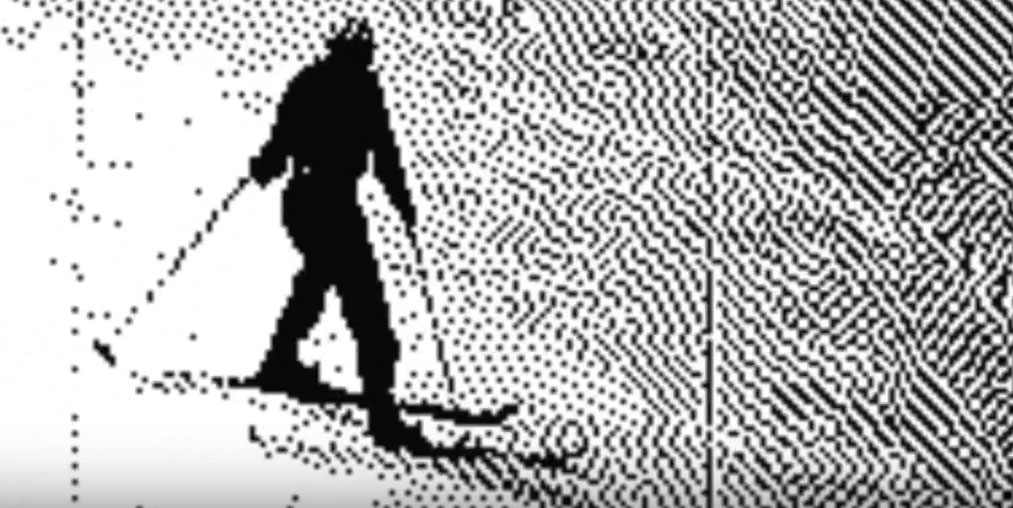
Reincarnation, music, 2020
…Lucas Methe

Lucas Methe will finally get his first book chapter in English. I have been working with Johanne Deffarges for months now to present this amazing French author to international audiences. Soon you will find his comic “Mommy in love with all the children” in the autumn 2020 Stripburger issue.

Shut-in-session
3, 2, 1, …
Salonski has migrated to SLN and is currently residing somewhere in the vast space between Scotland and Slovenia. The transcendental journey of a cosmonaut SLN reincarnated in a new, short, three compositions (Necromancy, Telepathy and Reincarnation) coming out on 5th of November. To commemorate the lift-off, I have decided to bring you a limited edition of personalized recordings for the song Reincarnation.
A 25$ cut vinyl will contain a personalized version of the song, recorded especially for you. No other copies made! Individual live performance directly from my apartment back to you. Audio vinyl postcard made from scratch. Only 14 days for you to preorder it! HERE:
https://leestavall.com/products/shut-in-sln
(all orders get a digital version too, just in case, plus the whole album of course!)
Reincarnation is a concerto for clarinet and a small orchestra with field recordings, so you are in for a treat. I know 25$ is A-LOT for most of us, so 50% profits will be donated to the free-for-all scientific journal site*. This way, you are supporting free knowledge for everyone. Good cause and art!
You can alternatively support the release by buying the online, generic (yea, not that exciting anymore is it!) release on Bandcamp for 10EUR.
https://salonski.bandcamp.com/album/-
Let’s make this a successful lift-off! Share! See you soon!
Cosmonaut SLN Domen
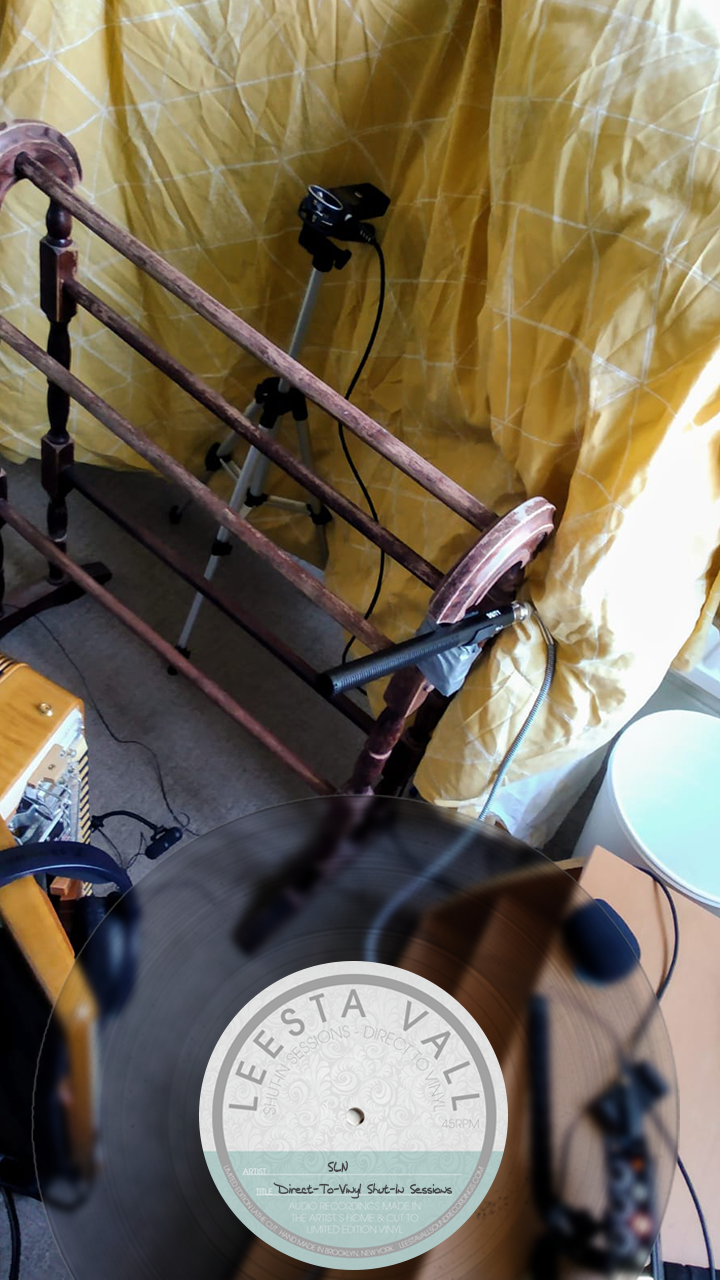
Matic Nowak: bruh
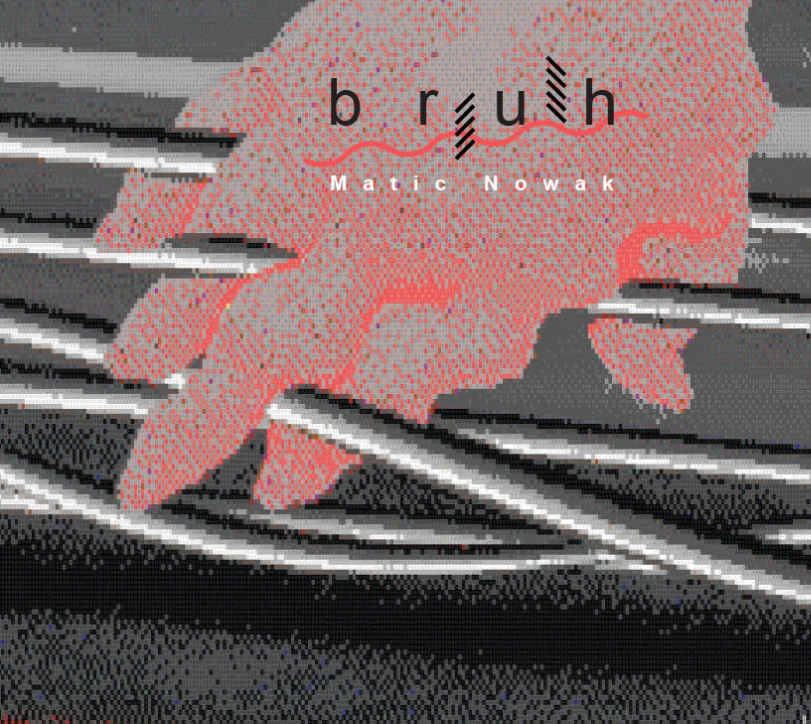
Design and illustration for the upcoming CD from Matic Nowak, soon to be published by Zalozba Klopotec.
…ARKOSBERG
I designed the beautiful CD of Evan Parker, Zlatko Kaucic, Massimo de Mattia and Bostjan Simon. Published by Zalozba Klopotec. Illustration by Miha Eric.
…A REPORT: What can we hear inside the box of -200°C?
I was fortunate enough to have the opportunity in our laboratory to record liquid nitrogen. We use it to disrupt plant tissues, making it easier to get better concentrations of DNA when we attempt extractions. I have used three microphones to capture this sound. The shotgun microphone was picking up the ambience of the sizzles when poured nitrogen made contact with plastic sample vials. Contact microphone was attached to the outside of the styrofoam box. However, the results were not fascinating. What did produce exciting results was putting another, relatively cheap piezo microphone directly into the box full of liquid nitrogen which resulted in cracking and popping for 40 minutes without problems. The microphone still works! When the microphone was taken out, it produced a fantastic “cooling off” sound which you can listen to at the far end of this recording—looking forward to exploring all of the 40min when time allows.
…BAD SCIENCE #1: Nisreen Alwan, A Covid-19 survivor based on her self diagnosis
Nisreen is a specialist in public health at Southampton University. She is concerned about the quality of life of people who have had a Covid-19 infection. Being classed as recovered is not enough she says, and we need to look more at recurring health problems associated with the disease.
This was an introduction to the subsection of The Science Hour podcast, titled “Putin’s Coivid-19 vaccine” (BBC World Service: 16.8.2020). Reporting on COVID is a mess. It is impossible always to expect an objective reporting from the journalists who struggle to keep up with the everchanging facts and fallacies in the Covid-19 research. To be honest, even medical specialists strive. But the standards of scientific reporting should be held higher for the podcast that calls itself The Science Hour. In the episode that was aired on 16.8.2020 they failed miserably and here is why.
Nisreen argues that a simplistic “death” vs “recovery” binary statistic is far too simplistic to show the severity of the Covid-19 pandemic. The recovery complications and longterm health conditions due to the virus infection is an interesting topic worth researching, but from here, everything goes wrong. Nisreen says: “I think I had Covid-19, back in the second half of March. I had symptoms, and then they did not go away until this day. I am thankfully much better and better than many other people who I hear accounts of in terms of having similar experiences, but I am closely back to normal.” She couldn’t exercise much and found even a simple housework tiring for months after initial infection with Covid-19. Oh, wait, we do not know if it was Covid-19 since Nisreen never took the test.
She had fatigue, chest heaviness, chest pressure, leg pains, shoulder pain; she claims those symptoms did not fit into anything else. But that is untrue. According to Baum’s Textbook of pulmonary diseases, those symptoms are common in different lungs infections.
Some people also report cognitive problems, memory problems, brain fogs etc. to which she responds: “Fortunately I haven’t experienced those or maybe I had but maybe mildly and I am putting that to age.” If she is unable to say for sure, she had the symptom of cognitive problem why speculate? Why adding to the confusion? Regarding severity of her symptoms, she says: “I wouldn’t call my symptoms severe”.
It is evident that Nisreen Alwan tries to build up a motivation for her research based on personal experience that has no proof except for her subjective experience of the disease. She has speculatively connected those symptoms with Covid-19 and now tries to ride the Covid-19 hype to execute her research that would include “me and other sufferers”.
Do not get me wrong; her suffering might be an exciting insight to try and understand this pesky virus. She does a good argument at her blog (although I would not use the word detrimental): “As a public health doctor and epidemiologist, I strongly think we must now clearly define and measure “recovery” from covid-19. This way, we can quantify non-death health outcomes and monitor long-term implications of the virus. The definition needs to be more sophisticated than just hospital discharge or testing negative for the virus. It must take into account symptom duration, fluctuation, overall functionality and quality of life in comparison to before infection. If we do not have enough information to define “mild” at this stage, then let us not use the term loosely; otherwise, it is detrimental to pandemic control.”
However, the way she presented her case in The Science Hour shows the unscientific approach of ignoring all the golden postulates of modern science: reliance on observation, explanatory power, universality and objectivity. None of this was met in her maybe infection with Covid-19.
The fact that the presenter did not question her approach I found disappointing, but in the age where even science tends to be fuelled with emotion in order to get funding, I am not surprised.
…A branch captured by a branch
During the Highlands trip, I have kept my ears on some interesting sounds. In Scotland everything is around water so everywhere you turn on your mic you get some hissing sounds of the landscape liquid flows. I struggle to escape this pattern of nature recordings. Here I present an interesting phenomena where a branch of Salix caprea got captured between another branch of the same tree. When strong winds occoured an interesting phenomena could be captured.
Next to Glen Affric, 09. 07. 2020, 8:45 PM, cloudy.
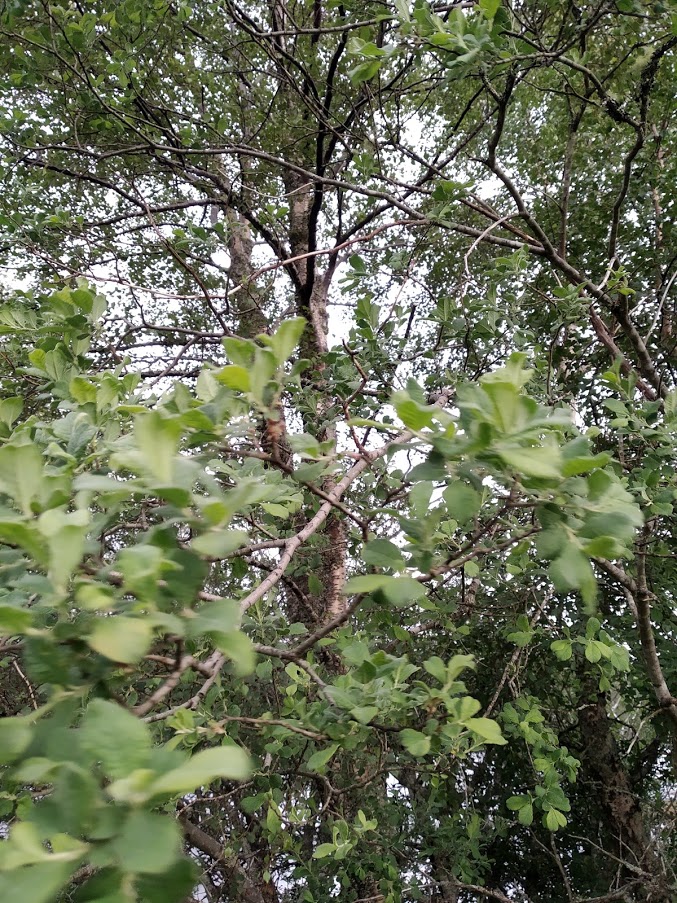
A REPORT: Birds in the morning
According to the RSPB, Birds use song and calls to communicate with other birds for a multitude of reasons.
The dawn chorus may dip in intensity during the breeding season, mainly during the short mating periods and again when the young are being cared for. There simply isn’t enough time in the day to defend or mark their patch and tend to the young! In the UK during high summer, the dawn chorus starts as early as 4 AM.
Hmm. These following sounds were recorded at 3:15 in Edinburgh.
3:30 AM: I am not alone. Voices! I hide in the thicket.
3:45 AM: Due to the fog, visibility is not great. See Figure 1. However, I am lucky. I spotted a bird and am trying to isolate its singing from the others.
3:55 AM: For the diehard birdwatchers, I present an unprocessed sound of another bird.
4:15 AM: A short break from the birds in the morning report. Descent to the Dunsapie Loch. Not everything is about birds there. A small animal, either a stoat or a weasel is swimming in the lake. Now that is a heavy breather. Never heard that one before.
4:30 AM: I’m not too fond of all bird species. Stalking a pair of crows is never a good idea. They spotted me, and now they are circling around my head! Not for the fainthearted.
4:45 AM: At the Duddingston apple orchard I finally meet a bird with some song variety. For the sake of my ornithological reputation, I hope those aren’t multiple birds.
5:15 AM: I think birds like the orchard. But not as much as the Duddingston lake. Here is a couple of birds walking in the water and on some random rocks.
5:20 AM: A second short break from the birds in the morning report. This is a 5-second recording of a stream of water dripping into the lake.
5:25 AM: Ah, what a jungle of sounds!
5:27 AM: This is a magpie…
5:28 AM: …and this is a peacock!
5:30 AM: I spot a bee. They aren’t as abundant as the birds, at least not at this hour. A time when one cannot hear the bee is the time when the bee is sticking its head deep into the bell-shaped flowers.
5:31 AM: At some point, the bee becomes entangled in the surrounding grass and gorse. I think that isn’t very reassuring for the bee.
5:32 AM: Together with the bee, cars start to emerge, and that persuades the birds to shut up slowly. Therefore, I put my sound recorder OFF.
To say goodbye - here is the sound of a small bird taking off…
…here is the sound of a medium bird taking off…
…and finally, here is the sound of a big bird taking off…
“A REPORT: Birds in the morning”, field recording, 2020
…Is Glossolalia Telepathy?
Captains room. 04:38 AM: Using glossolalia to contact CS in Canada. Lots of interference from the Japanese. Target reached. Could not remove the noises. The conversation lasted for over 7 min. That is something. Cloudy weather outside, light rain, strong winds. Cabin barely isolated. One can hear birds singing even at the North sea. Must be that time of year. Plenty of Raum and plenty of Zeit.
Telepathy, music, 2020
…Is Spiritualism Necromancy?
After this rather famous quote, the music of the late Barrington Pheloung starts looming over the Notre-Dame gargoyle. I was just turning seven when I heard it for the first time, and since then the melody stuck with me and set my view on film composition. But this is not an homage to him. People are way too often paying tributes to dead artists without their consent. Being stuck in the afterlife, they have no say on who would they want to connect with. It is the living who are continuously seeking to reconnect with them spiritually. Borrowing their hard-earned name brands to promote an art piece. I did it too, but my act is no homage. It is necromancy. Thanks, Barrington hope I did not disturb you too much. Rest in peace.
Necromancy, music, 2020
…Spaceship
Špik is a mountain in the Slovenian Julian Alps. Its summit is at 2,472 m (8110 feet) above sea level. The mountain’s name is a cognate of the English “spike,” derived from its pointed shape. Together with surrounding mountains known as the “Martuljek Group”, it can’t be missed when one passes by on a busy road towards Kranjska Gora. Dramatic topography is feeding imagination of every curious mind that wants to elevate.
The topography was used as a spaceship body, re-interpretation of the famous MicroProse space scene on the moon.
Spaceship, bitmap, 2020

A design for Stripburger tote bag

Causland Smitty
A visit to the Causland Smiddy museum, where the future of GB looks gloomy.
…Salt cooking in Cockenzie
Ever asked yourself how salt cooking might sound like? The history of linnen mushrooms? You must be demented!
Sound recording from Cockenzie, following the Wagoon trail.


